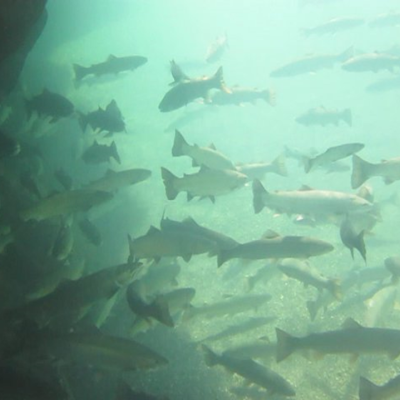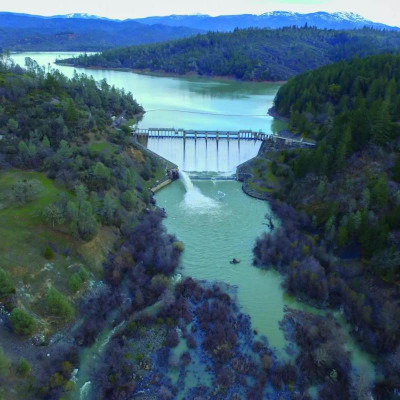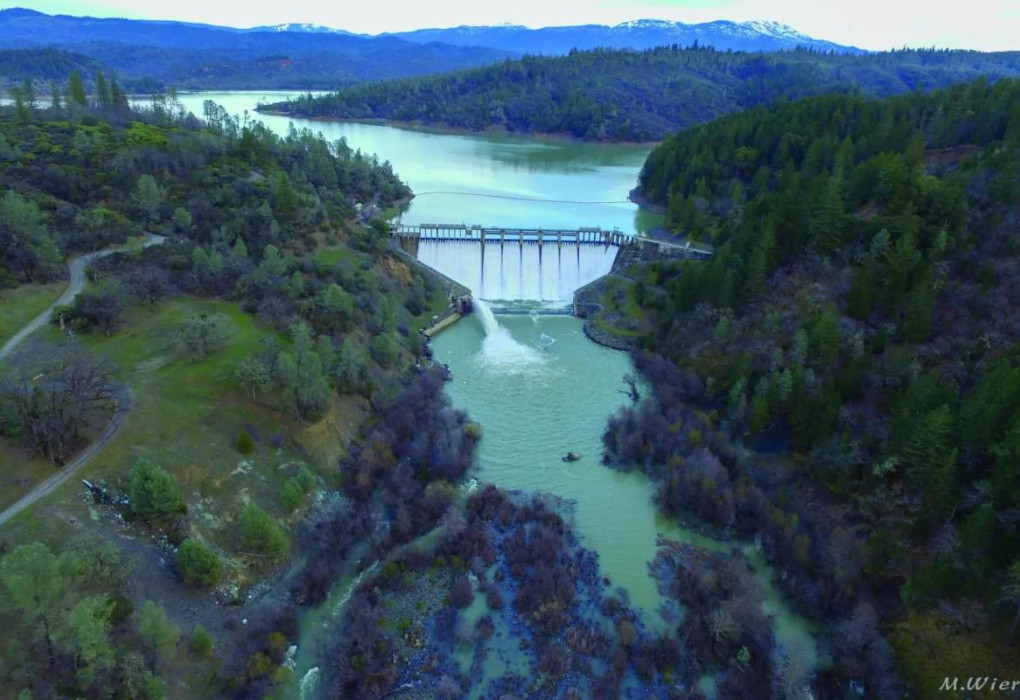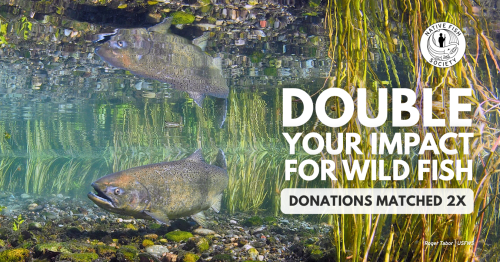StEELhead Discoveries Series - Part 8
*This is Part 8 of an ongoing series on the campaign to Free the Eel and efforts to better understand and revive the iconic steelhead in the Pacific Northwest by Native Fish Society Fellow Samantha Kannry. View all parts of the series HERE. Additional parts and updates will be posted over the next several months. Stay tuned!
~ ~ ~ ~ ~ ~
"We have spent the past few months troubleshooting a complex DNA-sequencing protocol that we still do not fully understand on the molecular level. The purpose of this lab work is to describe the distribution of different life-histories (run-timing and anadromous tendencies) and genetic diversity of steelhead, with the aim of conservation of sub-populations in northern California and southern Oregon. We achieve this by collecting tissue samples from juvenile fish and looking at their DNA. But it is easy to lose sight of the ultimate goals of your research while engrossed by the minutiae of taking tiny pieces of fin tissue and turning them into usable data. In the end though, we have the honor of occupying a unique niche in contemporary science. We are researchers who carry out all parts of a project ourselves, from conceptualization and planning to fieldwork and data collection to the laboratory to analysis and summarization of results.
Our earlier research on summer steelhead in the Eel helped to strengthen the case for dam removal. We showed that summer steelhead inhabited the area above the dam prior to construction, and the resident trout there are now poised to reestablish their anadromous heritage. Additionally, other researchers showed there were 288 miles of high-quality spawning and rearing habitat available above the dam, especially considering the warming trend in the climate. And, while we were spending these past months extracting, washing, and isolating DNA for additional research on the Eel and the region, key shifts regarding the Eel River dams have been underway.
The aforementioned studies were quite compelling to many of us, but the real driver of rapid progress on decommissioning has been PG&E’s desire to be rid of the project. As the relicensing process has progressed, it is moving closer and closer to speedy decommissioning. There is no viable entity to take over ownership and management of the project, as it is prohibitively expensive to maintain. Two years ago, the power generation facility was shut down due to transformer failure. Initially, PG&E intended to repair it, but they have backed off that idea, so the hydroelectric facility is no longer producing electricity. Last spring, PG&E acknowledged the larger dam poses a major seismic risk and committed to never again raise the gates on top of the dam, resulting in a 20,000 acre-foot decrease in storage capacity.
Throughout the FERC relicensing process, water users on the Russian River side (the project diverts water out of the basin for the wine industry and residential use in Mendocino and Sonoma Counties), have been searching for a way to keep the lower dam in place to maintain a diversion, or create a new diversion system. However, no one has offered to foot the bill for a new diversion or maintenance of the existing system. This past fall, PG&E filed their surrender application to FERC. They proposed two options, 1. Move forward with decommissioning without securing an inter-basin water transfer system, and 2. Dam removal with a new inter-basin diversion constructed concurrently. They also stated, “the company plans to continue to develop long-term mitigation measures which could include expedited partial or full removal of Scott Dam.” And could start as soon as 2028, according to their proposed timeline. Then, a few weeks ago, PG&E released a statement that they do not want to delay dam removal by combining it with constructing new diversion infrastructure, nor will they be a co-licensee on any continued project. At least this once, finances are in favor of the fish and river restoration. PG&E wants to be free of the Eel River dams as soon as possible, and we are hopeful we will see a free-flowing Eel in the near future."
-Samantha Kannry


~~~~~
About the Author:
Samantha Kannry has been monitoring, studying, and swimming with summer-run steelhead in the Eel River and other rivers of Northwestern California for the past thirteen years. She joined NFS as a volunteer in 2015, then became a fish genetics fellow in 2020.
While it has been clear to the native peoples of the region since time immemorial that summer-run steelhead and the congeneric spring Chinook are separate populations, not everyone else sees it so clearly. Her research has focused on using conservation genetic tools to elucidate the distinction between summer and winter-run steelhead.
When not minking (a combination of hiking, swimming, snorkeling, sliding, shimmying, and boulder jumping) down rivers, she is usually growing and eating fruit, moving manure at Caudal Fin Farm, or bike touring distances large and small. All working towards re-establishing the inherent continuity between rivers, land, and people.
Read StEELhead Discoveries Part 1 - 7 HERE.

